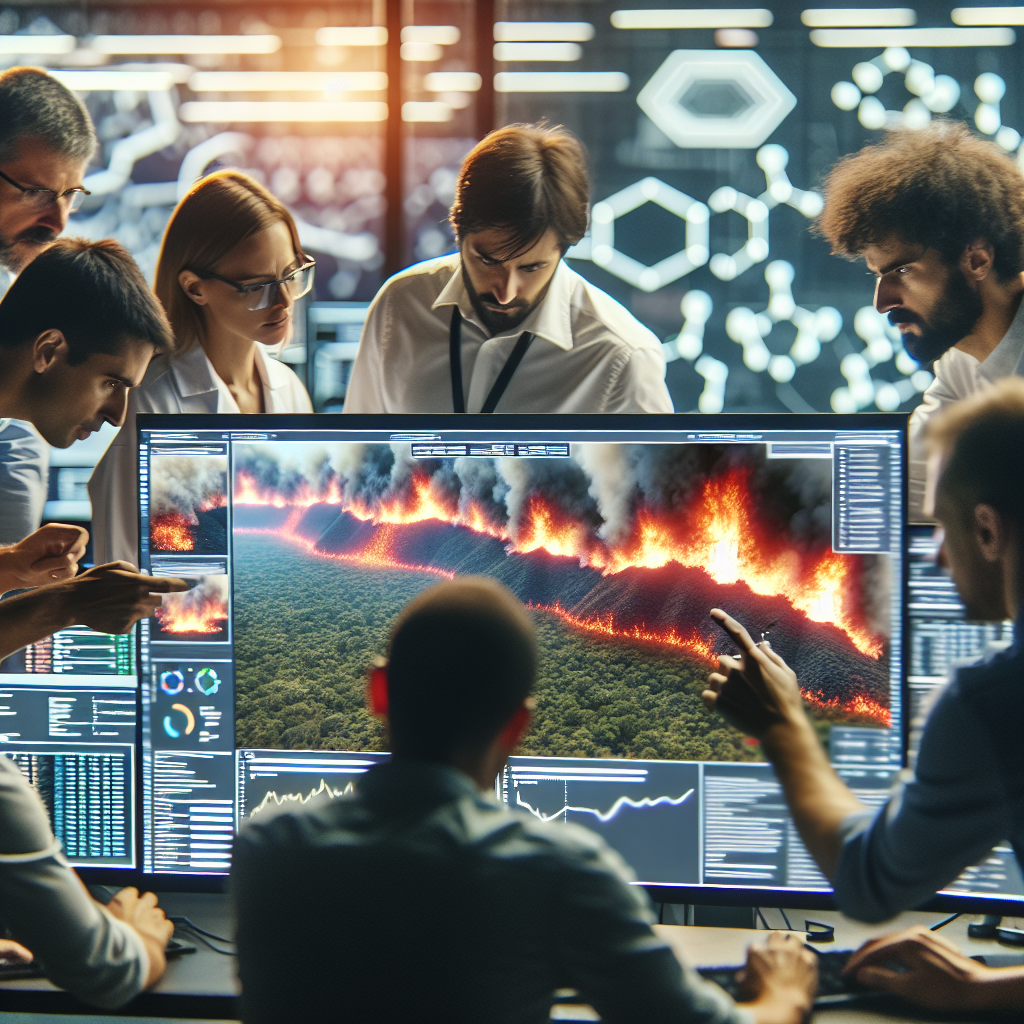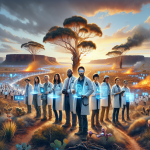In a groundbreaking development, scientists have begun leveraging cutting-edge technology from the film and entertainment industry to improve the accuracy and speed of bushfire predictions. This innovative approach is revolutionizing how we understand, analyze, and respond to these natural disasters, keeping communities safer and empowering emergency responders with better tools. Let’s dive into how this works and what it means for the future.
Why Are Accurate Bushfire Predictions So Important?
Bushfires, also known as wildfires in many parts of the world, have devastating impacts on the environment, wildlife, and human lives. Over the years, climate change has intensified these fires, making them larger, more frequent, and harder to predict. Without accurate predictions, emergency services face significant challenges in preparing for and responding to these events.
Here’s why improving bushfire predictions is critical:
- Minimizing loss of life: Accurate forecasting allows for timely evacuations and reduces the risk to human life.
- Protecting important ecosystems: By understanding fire paths, responders can make efforts to protect critical habitats.
- Reducing property damage: Improved modeling ensures that residents and governments can prioritize protecting infrastructure.
- Better resource allocation: Knowing where fires are likely to occur enables more efficient use of fire-fighting resources.
What Technology Are Scientists Borrowing from the Film Industry?
If you’ve ever watched a thrilling action movie or been awed by the lifelike special effects in a Hollywood blockbuster, chances are you’ve witnessed some of the incredible capabilities of visual effects (VFX) technology. Scientists are now applying similar principles used in filmmaking to study and simulate how bushfires evolve.
Visual Effects and 3D Modeling
At the core of this breakthrough are advanced visual effects (VFX) techniques. In the film industry, VFX allows creators to simulate environments, explosions, or natural phenomena with stunning accuracy. By repurposing these techniques, scientists can create complex 3D models of bushfires using real-world data.
How does this work?
- Data Integration: Scientists gather data on weather patterns, vegetation types, wind speeds, and humidity levels.
- Simulation: This data is fed into powerful VFX and simulation software to model how fires might spread in different scenarios.
- Visualization: The 3D models produced are incredibly realistic, giving researchers and emergency planners a clear view of potential fire behavior.
Motion Capture Technology
Another tool adopted from the film industry is motion capture (mocap) technology. While mocap is typically used to track human movements and bring characters to life in movies and games, scientists are reimagining its purpose for bushfire modeling.
The key idea here is to track how flames and particles move in real time under varying conditions. This reveals insights into the dynamics of fire behavior that were previously difficult to capture.
For example, by studying how embers rise and how wind carries them, researchers can better anticipate spot fires, which are smaller fires triggered by airborne embers landing far from the main fire. Spot fires are notoriously hard to predict, but this technology makes it more manageable.
Rendering Engines
Rendering engines, the backbone of realistic graphics in animated movies and video games, also have a new role. These engines allow researchers to render highly detailed representations of fire behavior. These visuals not only aid scientists but help communicate fire risks and scenarios to decision-makers and the public in a way that’s easier to comprehend.
How Is This Technology Making a Difference?
By integrating cutting-edge film industry technology into traditional scientific methods, bushfire prediction models are becoming far more advanced. Here are some of the ways this innovation is having an impact:
Faster Prediction Times
Traditional bushfire modeling methods could take days or even weeks to run a full simulation. However, VFX and rendering technology significantly reduces processing times. This means quicker predictions and faster responses to emerging fires, which can be the difference between containment and a wildfire spiraling out of control.
Improved Accuracy
With more realistic models and simulations, fire prediction has become more accurate than ever. Scientists can better account for variables like wind shifts, terrain changes, or the presence of different vegetation types, all of which play a role in fire spread.
Training Emergency Responders
Another exciting application of this technology is in training firefighters and emergency responders. Using lifelike fire simulations, they can practice tackling fires in controlled virtual environments, preparing them for real-world situations. This hands-on experience is invaluable, especially for responding to unpredictable scenarios.
Educating the Public
The realistic visuals created by this technology are also powerful educational tools. When communities can see how fires spread or how embers ignite spot fires, they’re more likely to take precautions seriously. It bridges the gap between abstract warnings and tangible understanding, promoting greater preparedness.
The Challenges of Implementing This Solution
Like any emerging solution, using film industry technology for bushfire prediction isn’t without its challenges. Among them are:
- Cost: Advanced VFX technology and rendering engines require significant investment, both in terms of software and hardware.
- Accessibility: Not all firefighting and environmental agencies have access to this technology yet, especially in developing countries.
- Data Dependence: The accuracy of these models depends on the quality and quantity of data collected. In remote areas, gathering such data can prove difficult.
- Interdisciplinary Collaboration: Bridging the gap between the entertainment industry and scientific research requires a multidisciplinary approach and effective teamwork.
What’s Next for Bushfire Prediction?
The future looks brighter, thanks to these innovations. We’re likely to see even more refined bushfire models in the coming years, driven by advancements in artificial intelligence (AI) and machine learning (ML). These technologies can analyze vast amounts of data more efficiently, refining models even further.
There’s also a growing push for global collaboration. Sharing data, resources, and breakthroughs between countries can accelerate progress and help combat bushfires more effectively worldwide. The integration of satellite data and drone technology will further enhance these efforts, providing even more detailed insights into fire behavior.
Conclusion
By tapping into the power of film industry technology, scientists and researchers are pushing the boundaries of what’s possible in bushfire prediction. From faster and more accurate predictions to improved public education and response training, the benefits of this approach are clear.
While challenges remain, the potential to save lives, protect property, and preserve ecosystems makes these advancements invaluable. As this field continues to evolve, we can look forward to a future where bushfire disasters are managed with greater precision and resilience.
If we continue to think outside the box—just like these scientists have—we can tackle some of the most pressing environmental challenges of our time in truly innovative ways.
“`


